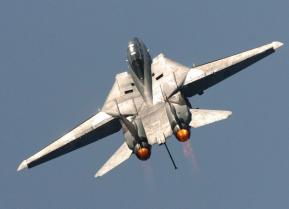Killers on the Battlefield: 6 Most Deadly Armies of All Time
Who made the cut?
To be sure, there were moments of military genius, mainly when Stalin empowered his few capable commanders, and promising technology, notably the T-34 tank. Still, these were not the decisive factors in the Soviet Union’s ultimate success, as its enormous sacrifices continued through the Battle of Berlin.
With the exception of nuclear weapons, Soviet army of the Cold War was not much different relative to its adversaries. While NATO held much of the technological advantages during the four-decade struggle, the Soviet Union enjoyed enormous numerical advantages in many categories, most notably manpower. As a result, in the event of a conflict in Europe, the United States and NATO planned to turn to nuclear weapons early.
United States
For much of its history, the United States has eschewed maintaining a large standing army. This was by design: while the U.S. constitution directs Congress to provide and maintain a navy, it only gives the power to Congress to raise and support armies as needed.
America was true to this model through the end of World War II, raising large armies during wartime but quickly dismantling them afterwards. Even still, the U.S. Army since the start of the 20th century as been highly effective, especially in battle against nation-states. It was America’s entry into WWI and WWII that helped tip the balance of power in favor of the allies. The United States also demolished Saddam Hussein’s Army in Kuwait in 1991 and Iraq in 2003.
More tellingly, the United States is the only power in history to be deploy massive amounts of military force, including land power, in a quick and effective manner. This highlights one of the major factors in the U.S. Army’s success; namely, while not as large numerically as countries like the Soviet Union, the U.S. Army is a highly-trained fighting force operating superior technology. It is also backed up by the greatest naval and air power the world has ever known.
Zachary Keck is the former managing editor of The National Interest. You can follow him on Twitter: @ZacharyKeck. Akhilesh Pillalamarri is a former assistant editor at The National Interest. You can follow him on Twitter:@AkhiPill.


